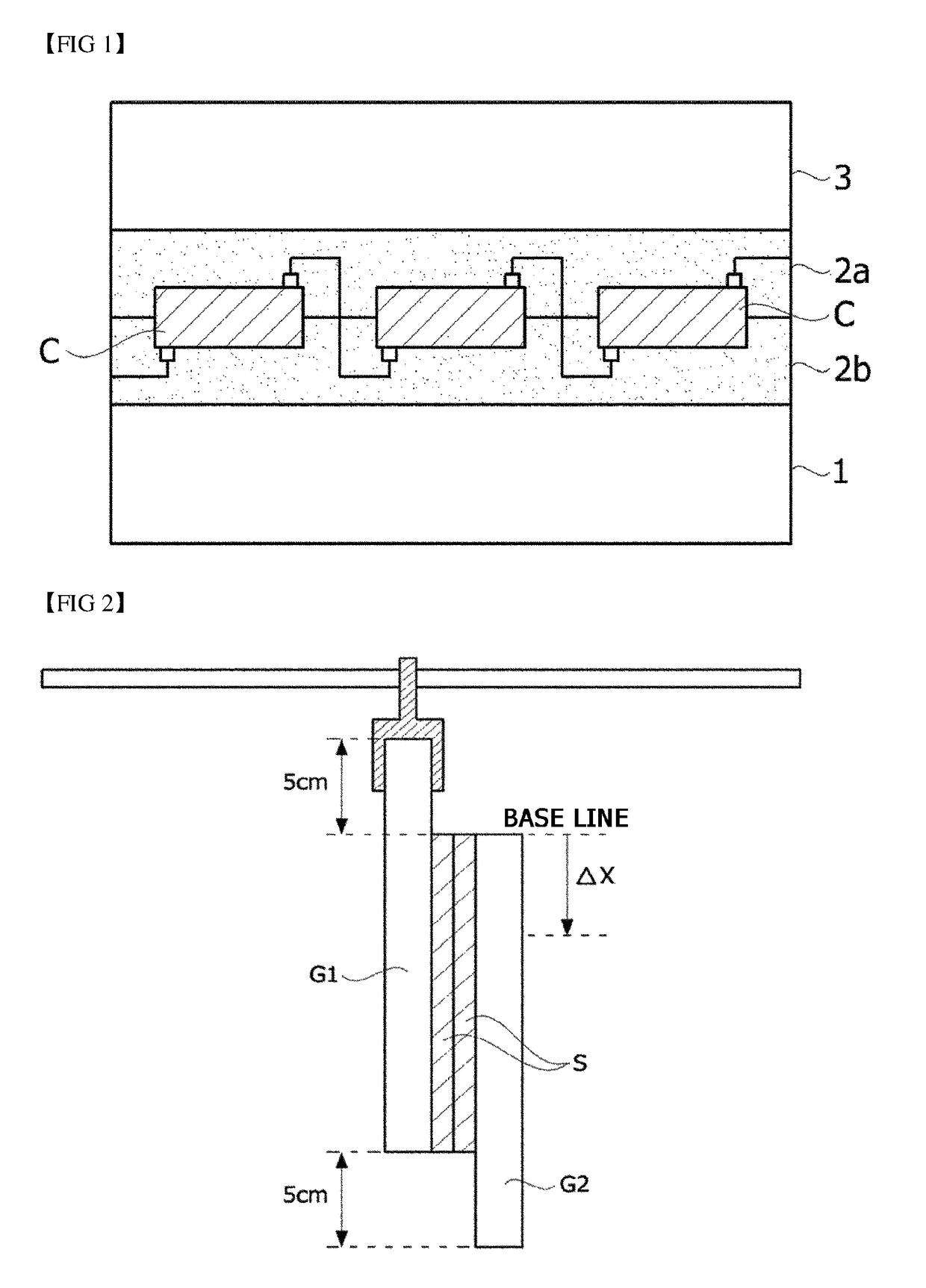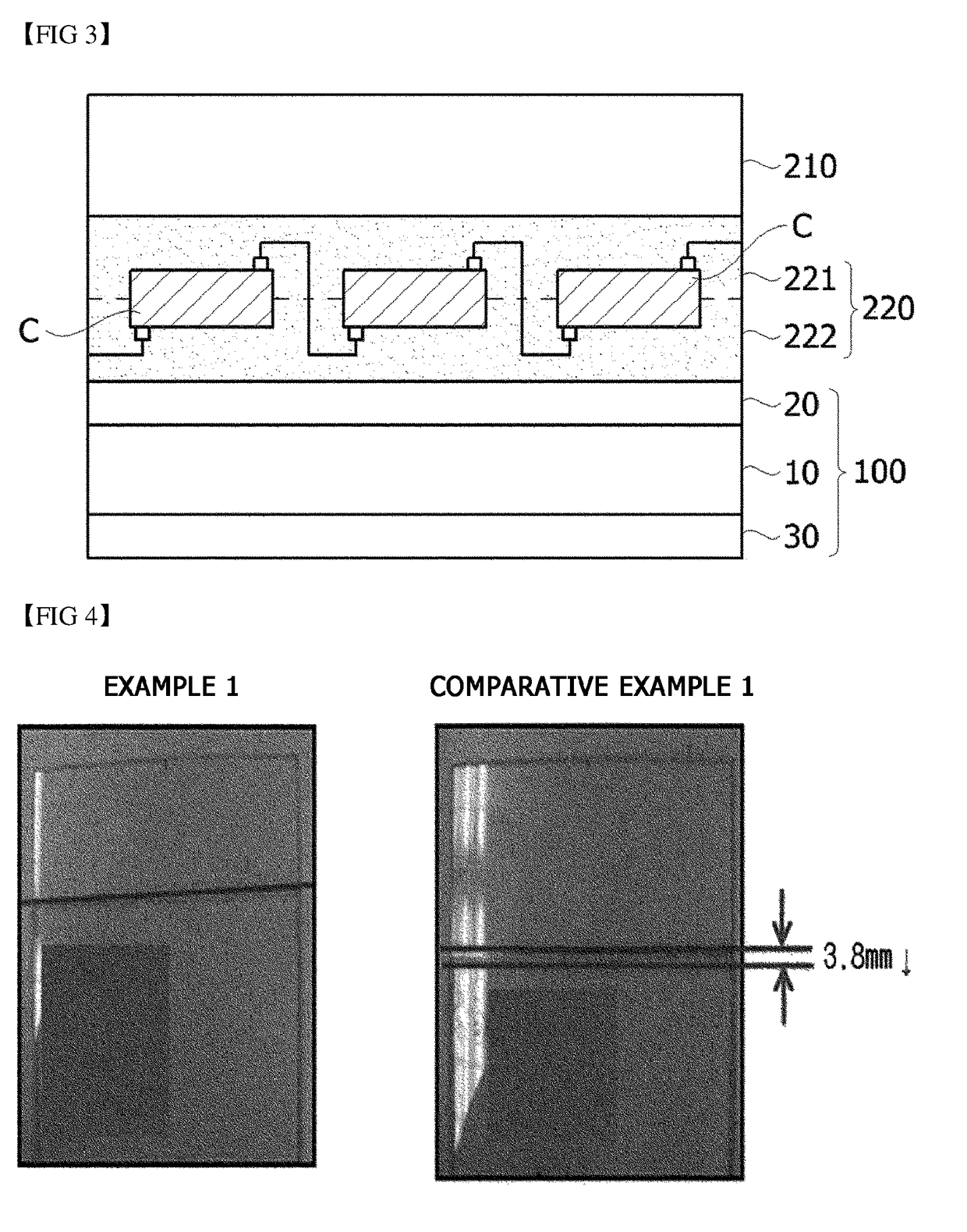Encapsulant for PV module, method of manufacturing the same and PV module comprising the same
a technology of pv modules and encapsulants, which is applied in the direction of film/foil adhesives, semiconductor devices, coatings, etc., can solve the problems of air bubbles, decrease efficiency, and low adhesive strength of solar cells c or tempered glass b>3, and achieve excellent heat resistance, small deformation, and improved creep properties.
- Summary
- Abstract
- Description
- Claims
- Application Information
AI Technical Summary
Benefits of technology
Problems solved by technology
Method used
Image
Examples
example 1
[0133]
[0134]After vinyltrimethoxy silane (VTMS) and Luperox®101 (2,5-bis(tert-butylperoxy)-2,5-dimethylhexane) were mixed in the weight ratio of 50:1, the mixture was included in the ethylene / 1-octene copolymer (LC670; LG Chem.) having a density of 0.870 g / cm3 and a melt index (MI) of 5 g / 10 min at a temperature of 190° C. and a load of 2.16 kg at 5 parts by weight with respect to 100 parts by weight of the ethylene / 1-octene copolymer, was put into a twin-screw extruder together with the ethylene / 1-octene copolymer, was extruded (heated, melted and stirred) at a temperature of 220° C. to perform a grafting reaction, and thereby the master batch of a silane modified ethylene / α-olefin copolymer (hereinafter, referred to as “Si M / B”) was prepared.
[0135]
[0136]A certain amount of a UV absorbent, a UV stabilizer and an antioxidant was mixed with the ethylene / 1-octene copolymer (LC670; LG Chem., hereinafter, referred to as a “base resin”) having a density of 0.870 g / cm3, a melting point (T...
example 2
[0139]The encapsulant sheet was prepared in the same manner as in Example 1 except that the LDPE was included at 1 part by weight with respect to 100 parts by weight of the mixture of the base resin and Si M / B.
example 3
[0140]The encapsulant sheet was prepared in the same manner as in Example 1 except that the LDPE was included at 3 parts by weight with respect to 100 parts by weight of the mixture of the base resin and Si M / B.
PUM
| Property | Measurement | Unit |
|---|---|---|
| Tm | aaaaa | aaaaa |
| Tm | aaaaa | aaaaa |
| temperature | aaaaa | aaaaa |
Abstract
Description
Claims
Application Information
 Login to View More
Login to View More - R&D
- Intellectual Property
- Life Sciences
- Materials
- Tech Scout
- Unparalleled Data Quality
- Higher Quality Content
- 60% Fewer Hallucinations
Browse by: Latest US Patents, China's latest patents, Technical Efficacy Thesaurus, Application Domain, Technology Topic, Popular Technical Reports.
© 2025 PatSnap. All rights reserved.Legal|Privacy policy|Modern Slavery Act Transparency Statement|Sitemap|About US| Contact US: help@patsnap.com


